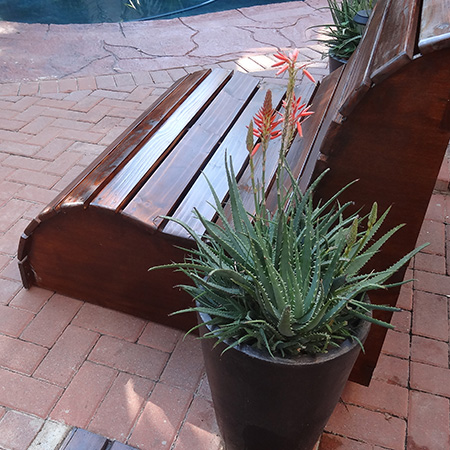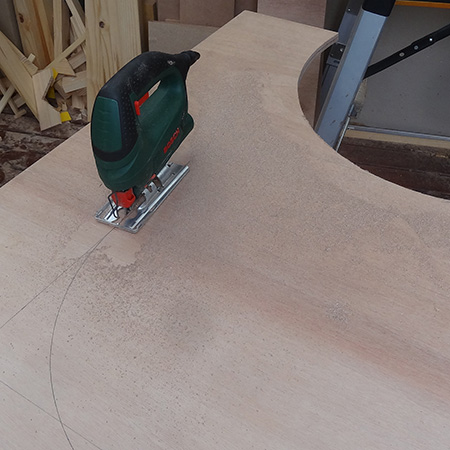 DIY TIP: If you want to add more supports – for a solid centre section or longer bench – you need to order a second sheet of 900 x 900mm marine plywood.
DIY TIP: If you want to add more supports – for a solid centre section or longer bench – you need to order a second sheet of 900 x 900mm marine plywood.
 3. Along the back of each support 3 slots were cut for mounting the 20 x 69mm back supports. One slot 100mm from the top – one in the centre – and one at the bottom.
3. Along the back of each support 3 slots were cut for mounting the 20 x 69mm back supports. One slot 100mm from the top – one in the centre – and one at the bottom.
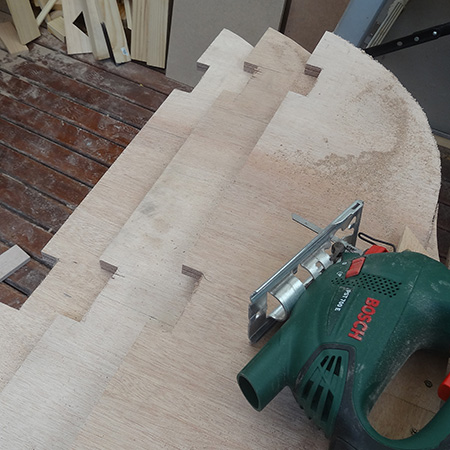 4. Drill 4mm pilot holes through the pine into the plywood supports and secure with 50mm screws – two screws at each join.
4. Drill 4mm pilot holes through the pine into the plywood supports and secure with 50mm screws – two screws at each join.
5. Secure the first 20 x 94mm plank at the top of the bench, making to allow a 20mm overhang on both sides. Drill pilot holes before securing with two screws at each join. Repeat this at the front (bottom edge) of the bench to ensure the supports are equally spaced from top back to front.

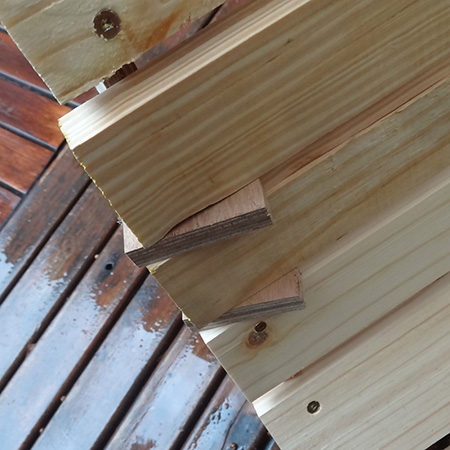 7. For this project insufficient 69mm wide planks were ordered and offcuts were used to create a full plank span. To allow for this blocks of marine plywood were secured to the centre support to allow for the screws for mounting the split planks.
7. For this project insufficient 69mm wide planks were ordered and offcuts were used to create a full plank span. To allow for this blocks of marine plywood were secured to the centre support to allow for the screws for mounting the split planks.

9. In the meantime you can use a jigsaw to trim any edges if necessary. However, this shouldn’t be required if the supports are aligned and the planks are cut to the same length.
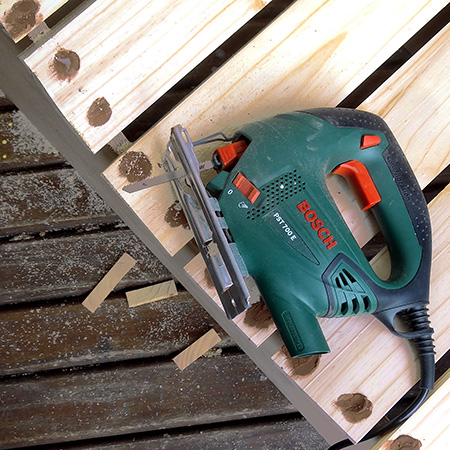 10. Use 60-grit sanding pads to sand away the sharp edges between the slats. You want the finished seat to be as smooth as possible. Also sand away any rough edges on the sides, and round off the edges of the slats. You could also use a router and roundover bit on the edges of the slats.
10. Use 60-grit sanding pads to sand away the sharp edges between the slats. You want the finished seat to be as smooth as possible. Also sand away any rough edges on the sides, and round off the edges of the slats. You could also use a router and roundover bit on the edges of the slats.
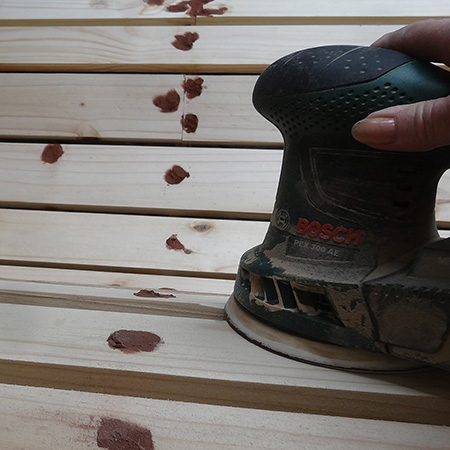 Finishing
Finishing
Repeat the sanding process with 120- and then 240-grit sandpaper for a smooth finish. Use a cloth lightly dampened with mineral turpentine to wipe away all traces of dust.
Apply sealer according to the recommended instructions. Three coats are applied with a light sanding between the first and second coats.
Want more details about this and other DIY projects? Check out my blog post! GO
